Abstract
Norman Wells crude oil was fractionated by sequential alumina and silicic acid column chromatography methods. The resulting nitrogen-rich fraction was analyzed by gas chromatography-mass spectrometry and showed 26 alkyl (C1 to C5) carbazoles to be the predominant compounds. An oil-degrading mixed bacterial culture was enriched on carbazole to enhance its ability to degrade nitrogen heterocycles. This culture was used to inoculate a series of flasks of mineral medium and Norman Wells crude oil. Residual oil was recovered from these cultures after incubation at 25°C for various times. The nitrogen-rich fraction was analyzed by capillary gas chromatography, using a nitrogen-specific detector. Most of the C1-, C2-, and C3- carbazoles and one of the C4-isomers were degraded within 8 days. No further degradation occurred when incubation was extended to 28 days. The general order of susceptibility of the isomers to biodegradation was C1 > C2 > C3 > C4. The carbazole-enriched culture was still able to degrade n-alkanes, isoprenoids, aromatic hydrocarbons, and sulfur heterocycles in the crude soil.
Full text
PDF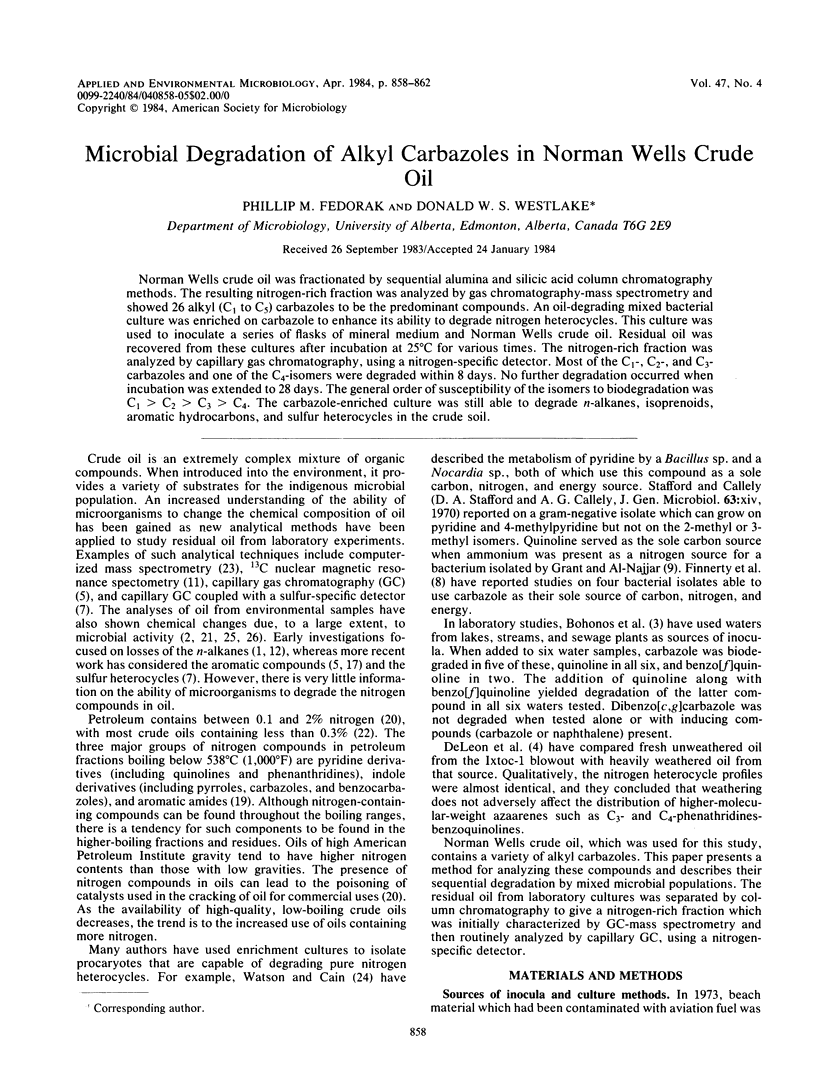
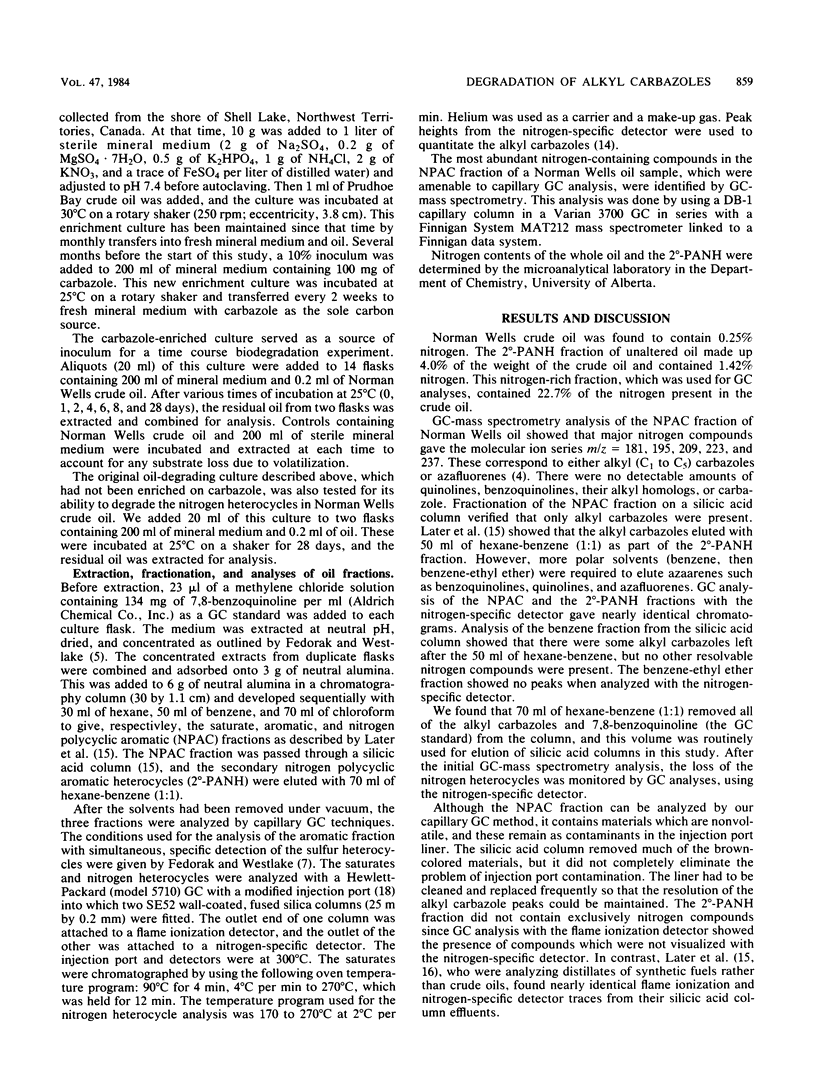
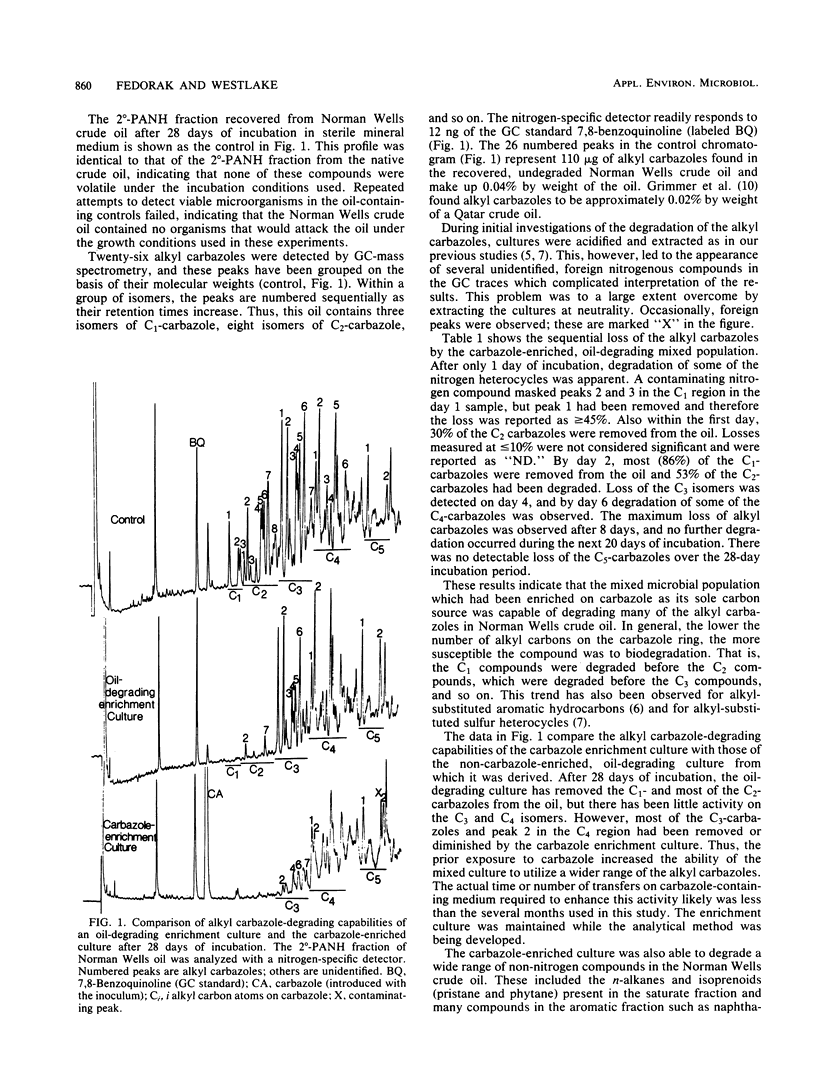
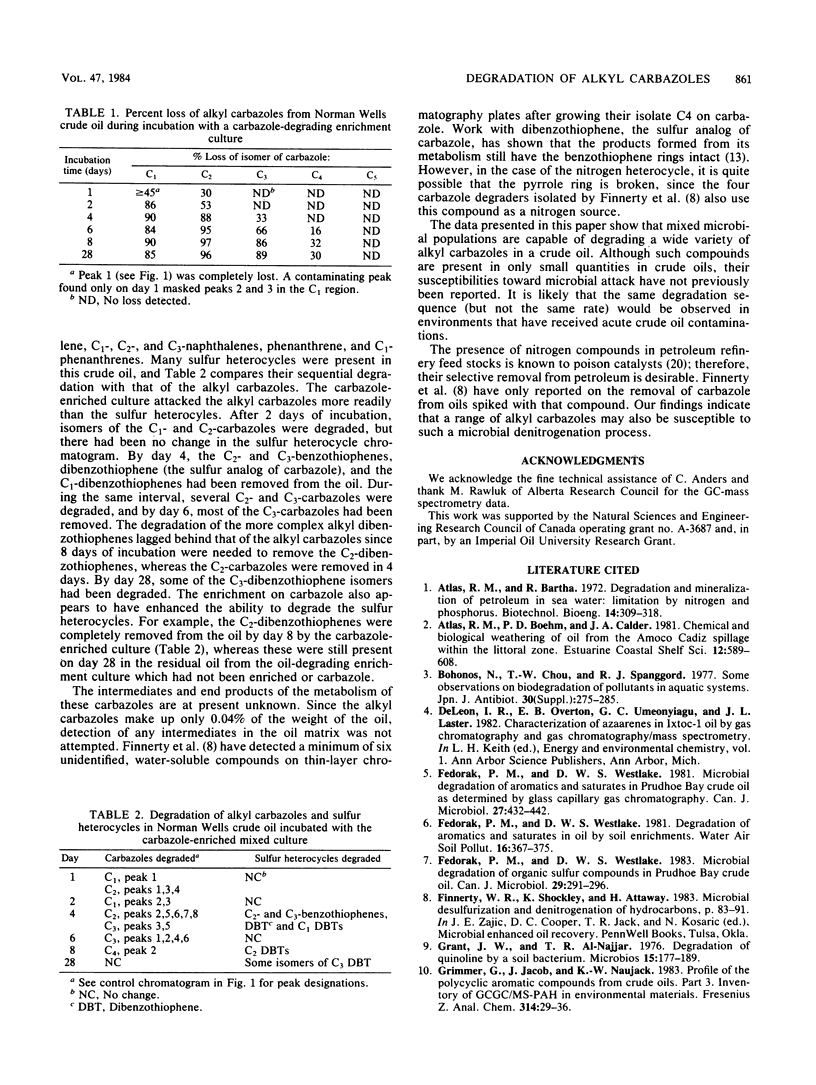
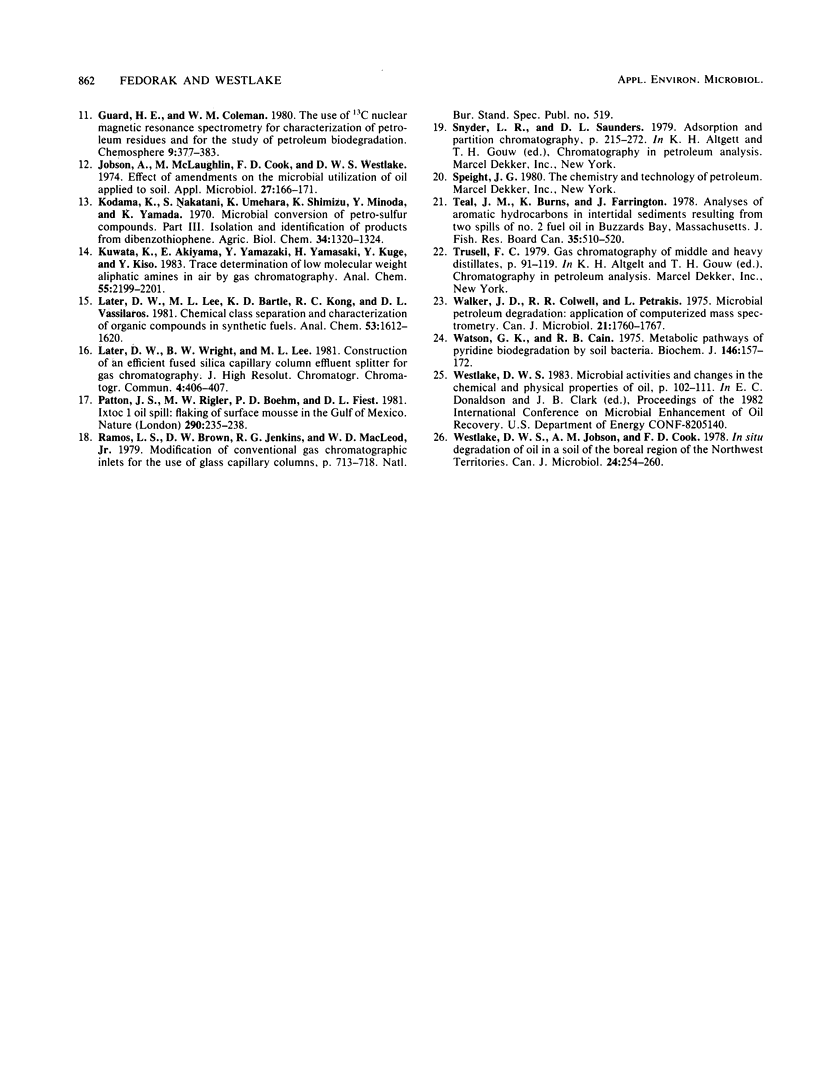
Selected References
These references are in PubMed. This may not be the complete list of references from this article.
- Atlas R. M., Bartha R. Degradation and mineralization of petroleum in sea water: limitation by nitrogen and phosphorous. Biotechnol Bioeng. 1972 May;14(3):309–318. doi: 10.1002/bit.260140304. [DOI] [PubMed] [Google Scholar]
- Bohonos N., Chou T. W., Spanggord R. J. Some observations on biodegradation of pollutants in aquatic systems. Jpn J Antibiot. 1977 Dec;30 (Suppl):275–285. [PubMed] [Google Scholar]
- Fedorak P. M., Westlake D. W. Microbial degradation of aromatics and saturates in Prudhoe Bay crude oil as determined by glass capillary gas chromatography. Can J Microbiol. 1981 Apr;27(4):432–443. doi: 10.1139/m81-066. [DOI] [PubMed] [Google Scholar]
- Grant D. J., Al-Najjar T. R. Degradation of quinoline by a soil bacterium. Microbios. 1976;15(61-62):177–189. [PubMed] [Google Scholar]
- Jobson A., McLaughlin M., Cook F. D., Westlake D. W. Effect of amendments on the microbial utilization of oil applied to soil. Appl Microbiol. 1974 Jan;27(1):166–171. doi: 10.1128/am.27.1.166-171.1974. [DOI] [PMC free article] [PubMed] [Google Scholar]
- Walker J. D., Colwell R. R., Petrakis L. Microbial petroleum degradation: application of computerized mass spectrometry. Can J Microbiol. 1975 Nov;21(11):1760–1767. doi: 10.1139/m75-257. [DOI] [PubMed] [Google Scholar]
- Watson G. K., Cain R. B. Microbial metabolism of the pyridine ring. Metabolic pathways of pyridine biodegradation by soil bacteria. Biochem J. 1975 Jan;146(1):157–172. doi: 10.1042/bj1460157. [DOI] [PMC free article] [PubMed] [Google Scholar]
- Westlake D. W., Jobson A. M., Cook F. D. In situ degradation of oil in a soil of the boreal region of the Northwest Territories. Can J Microbiol. 1978 Mar;24(3):254–260. doi: 10.1139/m78-044. [DOI] [PubMed] [Google Scholar]


